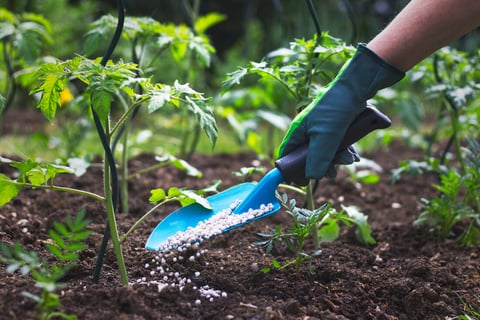


Trees can get sick, just like humans. Disease, injuries, and environmental conditions can all cause a tree to become sickly and decline. It’s important to be able to identify the signs of a sick tree so that you can start to implement some solutions.
Some of the signs of a sick tree include:
In this article we’ll dive into how to tell if a tree is sick and also what you should do about it if there is a problem.
There could be a number of things going on that could indicate you have a diseased tree. A tree could be plagued with an actual tree disease. Four common tree diseases in New England include Apple Scab, Needle Cast, Anthracnose, and Leaf Spot, which we talk about in this article.

But a tree could also be sickly from other problems it’s struggling with.
Let’s look more specifically at some of these signs of a sick tree and what you might expect to see.
As you might have guessed, the proper sick tree treatment will depend on exactly what’s going on. Different problems have different solutions.
If it’s determined your tree has a tree disease, for instance, there are some treatments that can address the problem. Fungicides can be effective for stopping the spread of certain fungal infections. Pruning can also help remove the diseased areas and prevent further spreading.

If it’s an environmental issue, such as your tree is lacking nutrients, tree fertilization might be warranted. A tree fertilization service delivers nutrients down to the root zone, where they’re needed most.
If there’s a pest problem occurring, there are different pest control strategies that can be used, depending on what you’re dealing with.

The key will be a proper diagnosis by a tree care professional. Then, the best treatment can be implemented.
In some cases, if a diseased tree is too sick, tree removal might be the best course of action. If your tree isn’t going to fully recover, it could become a hazard and start to pose a threat. It will be important that it is safely removed.
In order to ensure a proper diagnosis and implement the best course of action, it will be important to choose a good tree care provider. We recommend finding a tree care company that employs Certified Arborists. These experts are well-trained in the field and will be able to make a correct diagnosis.
Many tree problems mimic one another, so it can take an expert eye to figure it out. Then, the best choices can be made for your tree.
At Seacoast Tree Care, we’re committed to preserving the health and beauty of trees by performing vital services like tree pruning, tree removal, and general tree care the right way. When you make a wise choice in tree services, you’ll ultimately take an important step in protecting the value of your property’s trees.
Ready for safer and healthier trees at your Southern NH, ME, or MA home? Request your consultation and get a free quote for tree pruning services. We service properties in and around Stratham, NH, Kittery, ME, and Haverhill, MA. By making a wise choice, you’ll know your trees are in good hands.